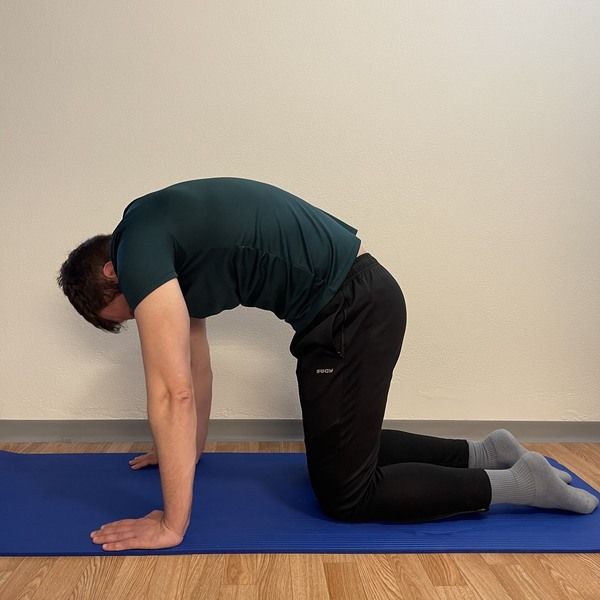How to Touch Your Toes in 7 Days (Most Effective Stretching Routine)
How to Touch Your Toes in 7 Days
Being able to touch your toes from a standing position is no easy task. Many people struggle with finding the right way to reach this flexibility goal.
That’s why I created an easy-to-follow and practical guide on how to touch your toes in 7 days.
Here is what you can expect from this guide.
You will learn the most effective stretching exercises that relieve the tension in muscles preventing you from reaching your toes.
And by following my stretching guidelines, you will achieve the fastest results.
Later on, you will discover what is stopping you from reaching your toes in the first place. As well as what benefits you’ll have from being more flexible.
Let’s dive in.
How to Touch Your Toes in 7 Days: The Most Effective Stretching Routine
Before showing you the stretching exercises, I want you to look at the guidelines for the stretching routine.
Here is how you should train to touch your toes:
- Perform every static stretch for the 30s.
- Perform every dynamic stretch 20 times.
- Hold-Relax stretch (5s/10s). Repeat three times.
- Perform every exercise only once during your daily stretching routine.
- Perform a stretching routine every day for seven days.
Hold-Relax technique explanation
Hold refers to holding the static (isometric) stretch.
Relax refers for releasing the static muscle contraction and going a bit further into stretching position.
I will explain these techniques in more details for every exercise.
Let’s move on to the stretching exercises.
1. Back Extensors Stretch on Yoga Mat
On the picture below is starting position for stretching the back extensors.

Then, do the following:
- Round your spine
- Tuck in your tailbone
- Draw your pubic bone forward
- Bend your head and neck
- Breath out during this movement
This is a dynamic stretch: repeat 20 times.
See the picture below to see the ending position in this stretching exercise.

2. Seated Back Extensor Stretch
Starting from sitting position, you need to do the following:
- Cross your arms
- Bend your body forward
- Tuck in your chin
- Breath out during this exercise
This is a static stretching exercise: hold for 30s.
See the picture below.

3. Standing One Leg Hamstring Stretch

Standing with one leg on the chair (see the picture above), do the following:
- Lean with your body forward
- Hold your back straight
- Slightly bend your leg
- Return to starting position
This is a dynamic stretch: Repeat 20 times.
4. Hamstring Stretch on Yoga Mat (Hold/Relax technique)
Here is the starting position for hamstring stretch on yoga mat.

After you’ve found the comfortable starting position, continue with:
- Moving your front leg forward until you experience pleasant stretching intensity.
- Afterwards, push your heal down and slightly bend your knee.
- Squeeze the hamstrings muscle for 5s (without making any further movement in your leg)
- Then relax your hamstrings and go further into static stretch.
This is a combination of hold and relax stretching technique (also known as pnf stretching).
Hold for 5s.
Release for 10s.
Repeat three times.
5. Sit-to-Stand ‘Touching Toes’

Starting position for sit and stand stretch for posterior chain muscles:
- Sit on the edge of the chair
- Lean your body forward
- Place your hands on the floor (if possible)
From starting position:
- Stand up slowly
- Extend your legs while holding your hands on the floor.
See the picture below.

This is a dynamic stretching exercise.
Repeat for 20 times.
Let’s move on to the last exercise in guide how to touch your toes in 7 days.
6. Standing ‘Touch Your Toes’

From standing position, reach down with your arms.
Hold your back straight.
Breath out during the exercise.
This is a static stretching exercise. Hold for 30s.
Congratulation! You are one step closer to reaching your toes from standing position.
Now you can retest and see if you feel the progress (or maybe even touch your toes!).
How to Prepare for Stretching Routine
To get the maximum effect from your stretching routine, you need to pay attention to two things.
- Having proper stretching equipment.
- Warm up your muscles.
Using the best stretching tools such as a yoga mat with blocks, a stretching strap, a yoga chair or a stretching anatomy book can help you become more dedicated to your flexibility goals.
Warm-up your muscles
Performing a few sets of squats, lunges and back extension on a floor is a great way to prepare your muscles for stretching exercises.
Additionally, you can do light cardio for up to 10 minutes and take one round with foam rolling your posterior chain muscles.
How to Touch Your Toes and Avoid Being Injured
Here is some practical advice you can use to avoid muscle injury when you’re training to touch your toes.
- An adequate stretching form is a top priority.
- If you feel muscle pain/burning, stop immediately. (seek medical advice).
- Don’t bounce into the stretch.
- Don’t overdo your stretch.
- Breath deeply and slowly.
Why I Can’t Touch My Toes
The most common reason preventing you from touching your toes is restricted movement in posterior chain muscles.
What are posterior chain muscles?
Muscles at the back of your legs and back. Some of the largest posterior chain muscles are the erector spinae muscles (along our spines), latisimus, hamstrings and calf muscles.
Posterior chain muscles help you keep your body upright. To touch your toes, you need to flex your body forward.
With that done, you challenge the flexibility of posterior chain muscles. With good muscle flexibility, you will touch your toes from standing.
Otherwise, you should improve the flexibility of muscles like hamstrings, erector spinae, and others.
Besides restricted posterior chain muscles, here are other factors preventing you from touching your toes:
- Anterior pelvic tilt
- Reduced hip flexion
- Long legs
- Overweight
- Stiffness in ankles
- Aging and sedentary lifestyle
Anterior pelvic tilt means your pelvic is rotated forward (anteriorly). That will increase lumbar lordosis and increase the tension of muscles (erector spinae) in your lower back.
Tight erector spinae will restrict the forward bending of your body, so you won’t be able to reach your toes.
Also, any joint or muscular restrictions in hip flexion will make it impossible to reach your toes smoothly.
If the hip joint is unable to endure deep flexion, it would be hard to hold the ‘reach the toes’ position.
Aging and sedentary lifestyles are both causing weakness and tightness in muscles, which results in poorer flexibility.
Other factors such as leg length, being overweight and ankle stiffness don’t have a huge impact on: stand and reach your toes challenge.
Benefits For Touching Your Toes
Being able to touch your toes will provide you with several benefits:
- Better flexibility in back, legs and hip.
- Improved deadlift and squat technique.
- Reduced risk of muscle injuries in hamstrings and calves.
- Increased motivation for other flexibility challenges.
Stand and reach your toes is a standard test for determining good flexibility in your body. You will be proud of yourself for achieving this test.
You will also perform better at squat and deadlift exercises. You can expect to reach a deeper squat or proper hip hinge during deadlifts with adequate flexibility of posterior chain muscles.
With that said, you will be able to add more capacity to your training. For example, if you add weight when squatting or deadlifting, you will both build muscles and lose fat tissue.





